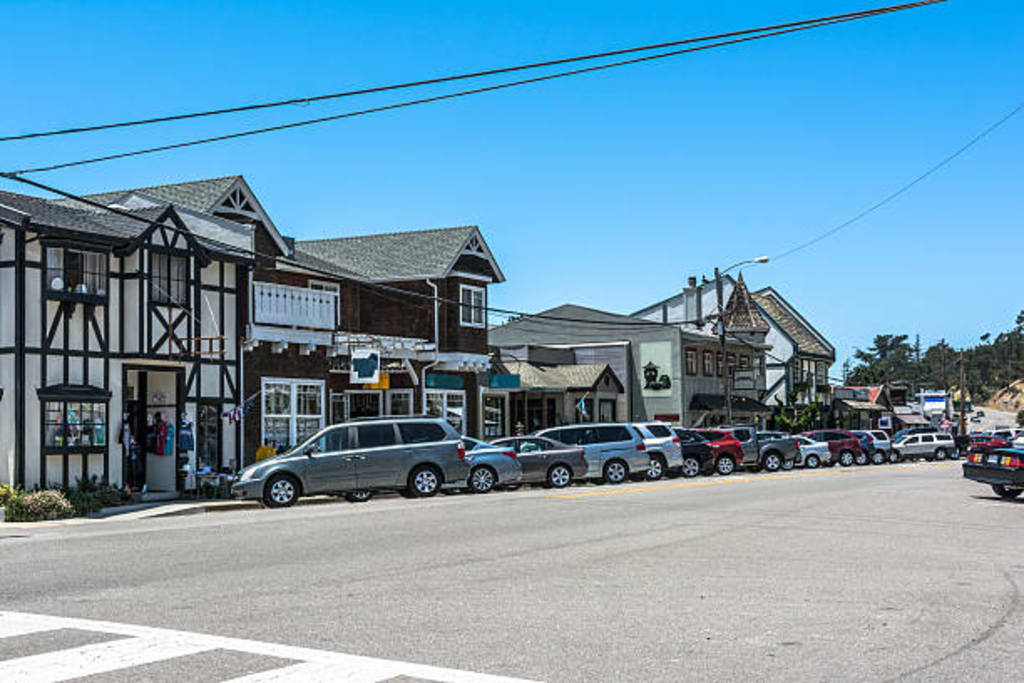
My parents and I drove down in our red Chevy Greenbrier van from San Francisco to Cambria on many weekends from the time I was nine, with the purpose of finding a lot to buy. We wanted to build a house there.
There are two routes from the city to Cambria. One is along Highway 101, a pretty straight shot. The other is along Highway 1, the coast route that becomes windy south of Big Sur. I preferred that route, despite spending much of the trip miserable lying on the back seat! The views of the Pacific are just gorgeous.
When I felt well enough, I leaned over the back of the front seat and watched Dad drive. (No seatbelts required in those days. Fortunately, my parents were good drivers.) I wanted to drive so badly!
By the time we moved to Cambria, I had driven the Pacific Highway many times. That was when I realized it is best to heed the speed limit signs on curves. Go any faster, and it's precarious.
We never built our house, but my parents did buy a wooded lot on Suffolk Street. It was in an upscale neighborhood on one of Cambria's hills. The wooded lot sloped down from the road quite steeply.
Monterey Pines are prevalent trees in and around Cambria. Our lot was wooded with them. When they grow near the beach, the strong ocean winds often contort them into fanciful shapes.
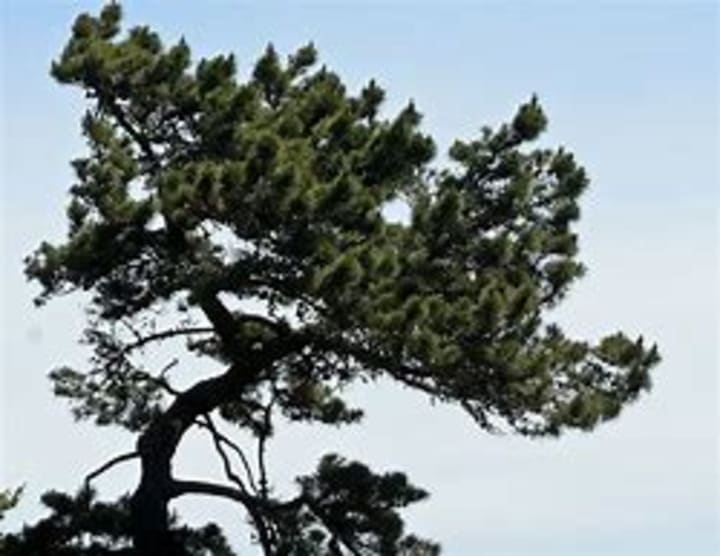
Now, those lovely trees are dying from a type of virulent fungus called pine pitch canker. There is no way to prevent or eradicate this fungus. It is predicted that 80% of the trees will be wiped out in the next thirty years.
As we hiked around the property, Dad told me about the adobe house we would build.
We would make the bricks in molds made from wood laid on the ground. If you are not familiar with adobe, the bricks are made from clay-rich dirt; sand; straw; grass, or pine needles; and water. These must be mixed in the right ratio, because if there is too much sand, the bricks will crack or break.
The bricks in their molds are exposed to sunlight for five days, then for a couple more days once they are taken out of the molds.
To test the strength, they are dropped from waist high. If they break, they contain too much sand. It would be smart to make a few test bricks first!
The bricks are then laid on their sides to cure for four weeks.
Walls are built at least ten inches thick to insulate the house. The walls are built on a foundation of stones or other material. Mud mortar is used to hold the bricks together.
Roofs are generally red tile, which blends beautifully with the adobe.

Dad envisioned our house as spanning the creek that ran through the property. A deck would provide a soothing spot to bask in the sun and listen to the gurgling of the water.
There would be exposed beams, and many windows, and woven rugs on the walls and blankets on furniture. A huge fireplace would grace the living room.
My father had many dreams. Mom and I shared this one. California missions are built from adobe. I loved adobe since I was a very small girl, and yearned for a home of our own where we would stay put.
We had moved many times up and down California from LA to Santa Barbara to San Francisco, the Napa Valley, and Sacramento and points in between. We made our 22nd move to Cambria.
By the time we moved to Cambria for my senior year of high school, my parents had sold the lot over financial issues. Moving to Cambria was the next best thing.
I don't know why my parents chose to move to Cambria when they did. It might have been that they wanted to fulfill their promise to me that we would live there one day. It might have been because they thought it would be a break from the stressful lives we led up to then.
Whatever their reasons, I felt glad when they told me we were moving to Cambria. We had lived in a succession of three different cities where I was miserable. My only regret was that I would be leaving my two friends in San Francisco and my boyfriend in Menlo Park.
Cambria is a small seaside town along the central coast. It lies between the towns of Cayucos and San Simeon, the site of Hearst Castle. Once a thriving artists' colony, when we lived there in 1969, Cambria had fallen off the radar to some extent. It's small population was supplemented by people from southern California, who owned vacation homes there.
The thing I did not like about Cambria was the weather. When Cambria is not foggy, it is windy. Rare is the day when it is both sunny and mild. This weather is typical of the central and north coasts of California. I was not crazy about it.
Mom and I moved into a log cabin on Weymouth Street on Happy Hill. Weymouth is at the north end of Cambria. Only a few houses on the other side of the street separated us from the rolling hills.
The cabin consisted of a large kitchen with windows that overlooked the ocean, a small bedroom, and a large living room and dining room. At one end of the living room stood a massive stone fireplace.
An old garage with a tiny office stood along the side of the house. Mom and I slept on the double bed in the bedroom. In retrospect, I wonder why I slept there, and not on the couch.
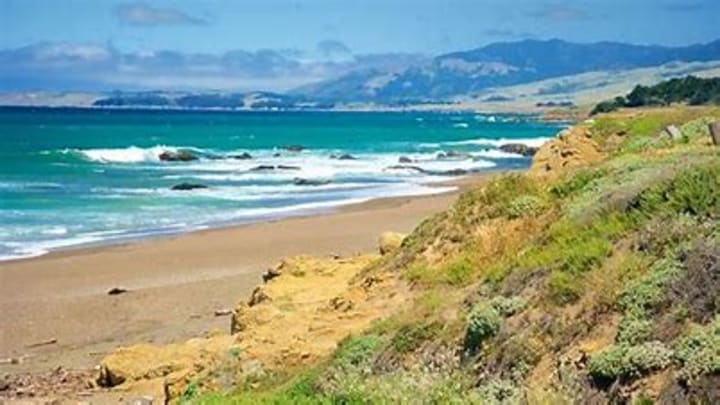
The cabin came furnished in heavy pieces made from maple in a style popular in earlier eras. A huge, round coffee table stood in front of the sofa. A braided rug covered the floor.
My dachshund, Chippie, became prone to seizures when we lived in Menlo Park, and was partially paralyzed in his back legs. Mom took him swimming in the lagoon down the hill, and within a few weeks, he was running on the beach and climbing steep rocky outcroppings!
Mom got a job as a school bus driver, as the closest hospital was in San Luis Obispo, 41 minutes away. Being new, she would have gotten the evening shift, and wisely did not wish to drive home through heavy fog late at night.
The bus she drove was small. Coast Joint Union High was small. My senior class was very small, with seventeen students.
She drove along pretty routes to transport students to and fro. Most of them lived on ranches in the surrounding countryside. One girl lived way up steep and windy Santa Rosa Creek Road. Some kids lived in Cayucos, another seaside town fifteen miles south, or up the coast highway a bit in San Simeon.
The only other small town I had lived in was St. Helena in the Napa Valley. Cambria was miniscule compared to that.
Main Street led from the Cabrillo Highway, or Highway One to downtown, then further up to neighborhoods on the other side of Santa Rosa Creek. In the west village on the way to downtown, or east village, were a couple of coffee shops, two gas stations, one providing tow services, some art galleries, and the Cookie Crock Market, as well as an auto supply store and a laundromat and the K-8th grade school.
Downtown proper consisted of a grand old bank, a small library, a five and dime, a church or two, and a few small shops. Old houses lay scattered about. The bank was clearly built at a more prosperous time in Cambria's history, maybe when it was a quicksilver mining town from 1862 to 1889, when a fire virtually destroyed the mining business.
I often met Dad at the train station in San Luis Obispo. He and I loved to ride trains. They are relaxing with their rhythm. Dad bought me crossword puzzles and other word games. I spent hours of my life happily filling them in and improving my vocabulary. Plus, learning frustration tolerance!
It's a long ride from San Francisco to San Luis Obispo. The train chugs its way in a fairly straight line until it reaches a steep grade near San Luis Obispo. The grade starts after the train travels through a long, dark tunnel. On the other side is a wonderful view of the city.
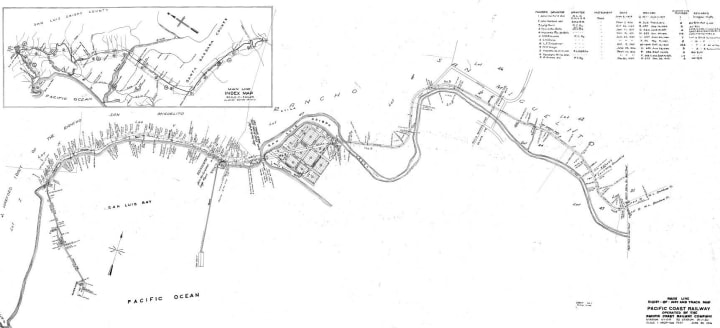
The final section of the track curves downhill around and through a neighborhood. As the train towered over the houses, I thought "I wouldn't want to live there and have to worry about a train falling on my house at any moment!"
_______________________
Coast Joint Union High was the smallest high school I ever attended, by far. The old-fashioned main building was small, and held the principal's office, staff offices, and a large classroom used for home economics classes. The rest of the classrooms and the cafeteria were housed in prefab buildings placed around the Broncos' football field. A newer, large gymnasium sat on the side opposite the main building.
In back of the gym lay a pasture. At the beginning of every class, we had to run laps around it while leaping over cow patties! It was fun.
My fellow students included kids who lived on ranches, a girl from Cayucos, who became my good friend, a girl whose father worked as a corporate attorney, and a boy from the family that operated the towing service. One girl was Samoan-American. Her family was the only Pacific Islander-American family in Cambria, probably in the entire area.
One of the boys took a liking to me. Howard became a bit of a pest, but I liked him, and made time to pay attention as he showed me his fine sketches of school life and scenery. He sketched a portrait of me.
Ben was a biological child whose parents had adopted his older brother. In his parents' eyes, the brother was perfect -- a jock, good-looking, well-built -- whereas Howard fell short. Howard was anything but athletic or good-looking, but he made up for that in droves, in my opinion, with his kindness and intelligence and wit.
Apparently, Howard's father rejected him outright, and he and the brother lorded the boy's accomplishments over Ben. The parents attended the brother's football games, yet did nothing with Ben. I found it peculiar and cruel that they rejected their own biological son.
The high schools I came from in northern California were huge, and somewhat impersonal. I enjoyed attending a school where it was possible to get to know everyone in my class. The classes were small, and that was nice, too.
Because I took incompletes in junior English and math, I needed to make them up. I was allowed to do independent study. My English teacher's kindness and concern touched me. I was free to pick any book in the library to read and make a report on. She always gave me good feedback and complimented me on my writing.
The most memorable book I read was about a woman who died, but remained in limbo, getting pulled here and there when people thought about her. She had to resolve all her relationships before she could rest.
The plot may sound a bit gruesome, but the way it was presented was engaging and interesting. The book must have gone out of print by the time it occurred to me to look it up, because I never found it. I don't know the title or author.
I found that geometry suited me, and did well. I learned later that many people have the same propensity for one or the other.
Coast Joint Union had teachers from the area, who seemed relatively uninformed of the current social and political climate. In the two schools I went to previously, black kids were riled up over civil rights and black power. In Cambria there were no black people.
My attitude was and is that there is room and need for diversity in this country; that prejudice and bigotry have no place in America.
My civics teacher was a grossly obese man and veteran of the Second World War. I could not believe my ears when he used the pejorative term "Japs" to describe the Japanese. I became so upset that I refused to go back to his class. I complained to the very nice principal about the teacher. He allowed me to drop the course. I completed it at by taking a GED course at Cuesta Junior College.
Cuesta is located between San Luis Obispo and Morro Bay, so it was a fairly long drive to make two evenings a week. The class was boring as hell, but at least the teacher wasn't a racist.
Cuesta at that time was made up of old wood buildings of Camp San Luis Obispo, a California National Guard base. We students clomped up a short flight of stairs into a dingy room set up with desks in long rows. We were handed booklets containing the course units. At the end of the course, we passed or failed multiple choice tests. I felt I learned virtually nothing, but passed because I was good at those kind of tests.
My experience of Cambria was mixed: on the one hand, I loved the area and the quaint houses we lived in; on the other hand, it felt too isolated. and I had little in common with most of the kids, whose backgrounds were so different from mine.
Plus, there was not a whole lot for teenagers to do in Cambria. I liked to walk on the beach and collect moonstones and other rocks -- Cambria is famous for moonstones, those beautiful opaque, white, rounded stones.
Some kids went diving for abalone or fished from piers in San Simeon, Cayucos, or Morro Bay. Most of the boys played sports. The ranch kids returned home after school to work tending to the cattle or doing other chores. I'm sure kids went over to each others' houses, but I knew hardly anyone to do that with.
My best friend in Cambria was Rena, an absolutely gorgeous Portuguese-American girl. She lived with her parents in a small old house behind a store building in Cayucos, a town about fourteen miles south of Cambria. Her dad was making the store into a home for them.
Rena's petite and lovely mother immigrated from Portugal with her family as a teenager. Cayucos began as an enclave for Portuguese immigrants, who brought their way of life as fishermen.
In 1969, Cayucos was not much to look at. It's main street, where Rena's house was, was a haphazard array of funky houses, storefronts, and shops.
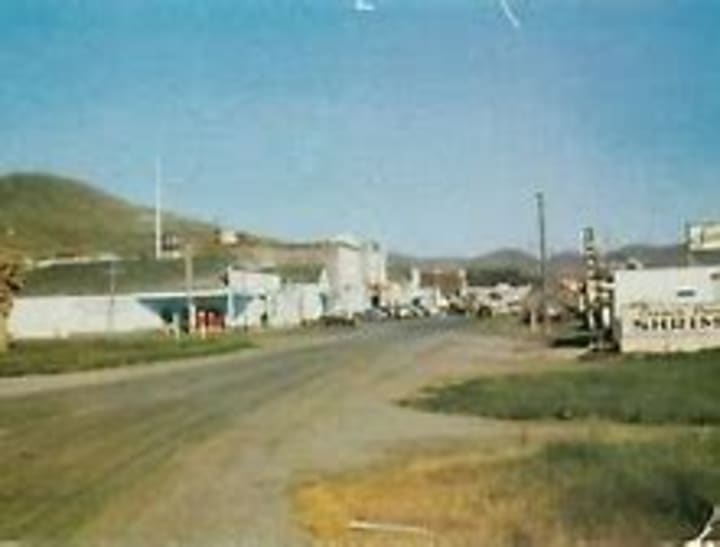
But it did have some quaint old buildings downtown, as well as a white sand beach and a long pier.
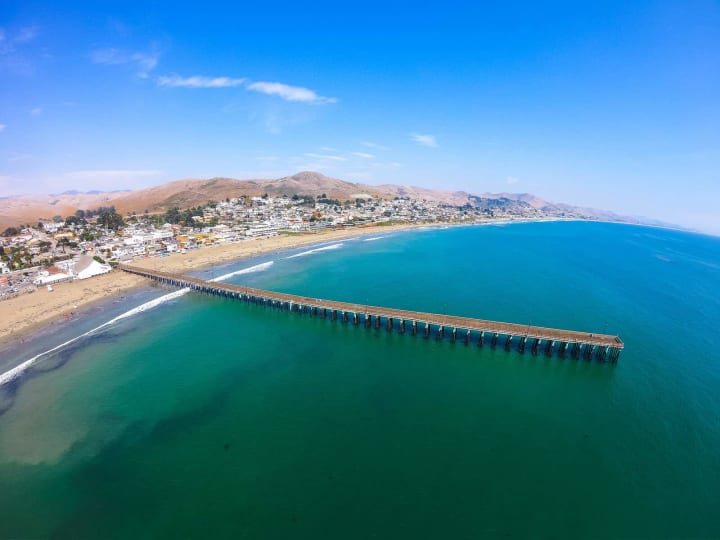
Rena's vivacity and sex appeal and my beauty made us an enviable pair. The other girls seemed to take it in stride that two new girls like us took some of the spotlight away from them. Neither of us presented much competition, though, because I already had a boyfriend who often visited from Menlo Park, and Rena didn't seem to be interested in any of the boys at school. Her relationships with them remained light-hearted friendships.
Rena's family moved up from West Covina, where her dad had worked as a welder. He retired early due to emphysema he developed from toxic exposure at work. A large white man, he knew how to do many things with his hands and was very strong.
Rena laughed a great deal, sometimes at me. She told me she loved my dry sense of humor. For example, when at school we all had to wait in line and enter between metal bars, I said, "What do they think we are? Cows?"
A year later Rena met a grad student from Cal Poly in San Luis Obispo. I met him when Vince and I joined them in the student "architecture graveyard" near the school, where students build trial runs of their often fanciful designs.
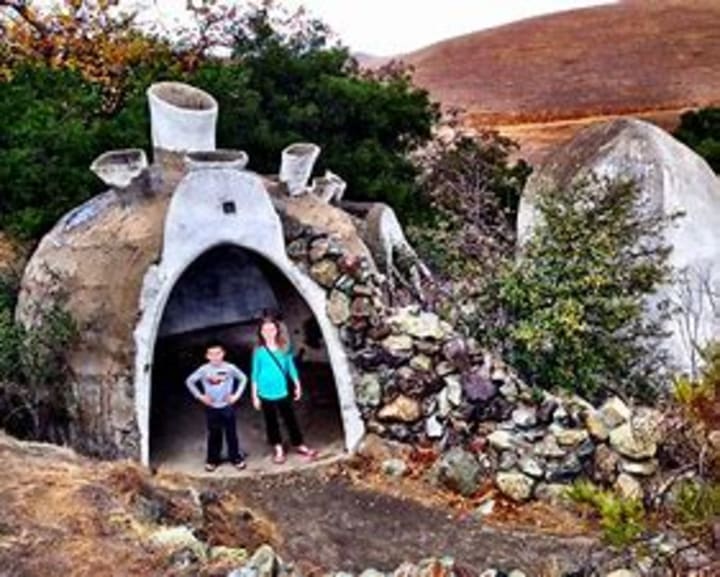
When Rena later told me they were about to be married, I dissuaded her from marrying him. I didn't like his personality and felt he would dominate and mistreat her.
She seemed to have mixed feelings about my "intervention." Our relationship felt more distant after that. But, I felt I had to let my opinion be known and warn her as her friend and an ethical person.
Soon thereafter, Rena married a more compatible man. I was not crazy about his sardonic attitude. He seemed to dislike me, as well.
Rena gave birth to three or four boys. I once glimpsed her a year or two later in their little house in Morro Bay. For some reason, I felt I should not visit her.
When I married my first husband, Abdul, the very pregnant Rena and her husband attended. Rena looked radiant, as always.
___________________
Vince often rode down from Menlo Park on his motorcycle. At the log cabin, he stayed in the tiny garage at the side of the house. We played games on the coffee table or simply sat to watch the fire.
One night as I relaxed in front of the fire, I felt an odd sensation as the sole of my boot melted off! I quickly pressed the sole back on, and it was good as new.
Roy also made many trips down to visit in his red Volkswagen Bug. He and Vince and I took many trips to Yosemite, where we stayed in a small cabin on the grounds of Yosemite Lodge.
The window openings only had screens, so in the winter it was bitterly cold in there. We piled on lots of blankets and shivered until we finally got warm.
One night I ventured out to the restroom. When I came out, a huge raccoon had tipped over the trash can and feasting on scraps!
Yosemite is famous for El Capitan, a 3,000 foot 130 million year old monolith at the end of the valley. Below are Giant Sequoias, 3,000 years old. We walked the path to the base, where there is a gurgling creek.
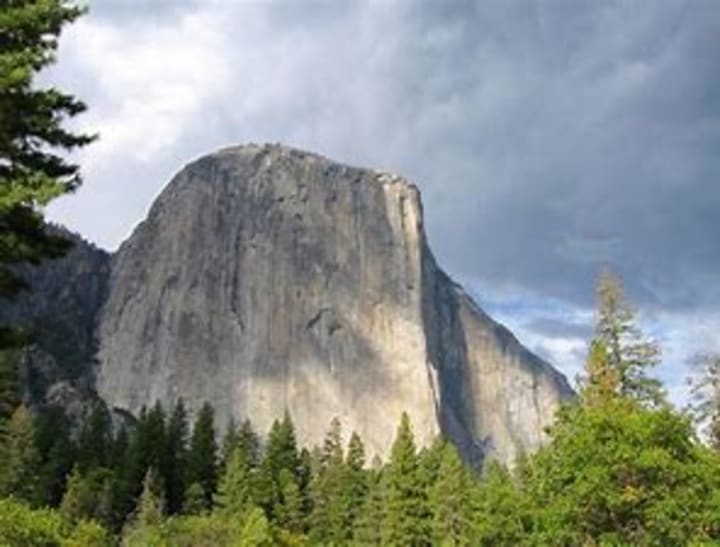
We either ate in the lodge's restaurant or bought food in grocery shop in Yosemite Village. Man, that place got packed during the summer or Christmas or spring break!
We always toured the roads in the valley, and stopped in the Ahwahnee Hotel, an iconic landmark built in 1929 in order to draw wealthy visitors to the valley. It's named after the Ahwaneechee, the first residents of the valley. It means "land of the gaping mouth."

The Ahwahnee has been continuously expanded upon and remodeled, and has many interesting features. It was built of wood, granite, steel, glass, and cement painted to look like wood in a rustic style.
The lobby of the Ahwahnee is a sight to behold! The beamed ceiling is painted with art deco patterns; paned windows reach to it; huge round intricate metal chandeliers hold lights that look like candles, and hang over the large seating area with comfy armchairs and sofas; Indian blankets grace the walls; a huge fireplace sits at one end, topped with Indian baskets.
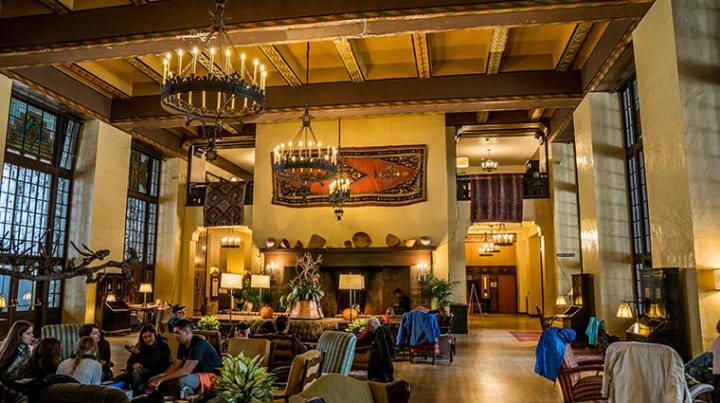
As you can imagine, renting a room at the Ahwahnee is expensive. There are also cabins scattered on the property. These are reached by wooden walkways over the ground.
One winter my husband and I reserved one of the cabins. We checked in, then carted our luggage and infant son out in the freezing night. But when we entered the cabin, we noticed a sign on the door with a much higher room rate than we anticipated.
Being on a limited budget, we hauled our stuff back and packed the car, loaded our son into his car seat, and wondered where we would find to stay. We ended up at Yosemite Lodge, where the rooms were reasonable.
On one trip to Yosemite Roy, Vince and I drove along -- I should say through -- narrow, icy roads between ten foot banks of snow. It was beautiful in its own way. We were sure glad we didn't break down in there!
Vince took me on many rides on his motorcycle, once to Yosemite, but more often just up and down Highway One. North of Cambria is a long stretch until San Simeon and its famous Hearst Castle. Often, we stopped at a beach there and wandered around.
Past Hearst Castle, the road becomes narrow, steep, and windy, above cliffs that drop straight down to the ocean. A family in Cambria ran the only towing service. One of the girls in my class was part of that family, and her brother attended Coast Joint Union High, as well.
The brother worked for the company. He told harrowing tales. Many a car has gone over those cliffs. Imagine hooking onto them and pulling them up!
What happens is roughly this: a tow truck driver and a rescue officer rappel down the cliff while wearing harnesses. The tow worker carries with him a strong steel cable with a hook and a chain. The rescue officer checks for survivors and bodies; the tow worker attaches the cable and chain around the axle using the hook.
It is extremely dangerous work, as you can imagine, especially in bad weather.
Along the way up Highway One, there are places you can pull into on a motorcycle. Vince and I got off his bike at one, and sat on an outcropping. Suddenly, Vince screeched and jumped up. There was a rattlesnake! Granted, it was small, but still.
Panicked, we headed back to the nearest hospital, many miles away in San Luis Obispo. To use a proverbial phrase, we shot like birds out of hell.
After a long wait in the emergency room, we were told that the bite wasn't serious. Phew!
Once we rode south for 66 miles to Pismo Beach and Santa Maria. It was a disappointing destination, I thought, with little interest once we got to Santa Maria. The route is inland from San Luis Obispo, with no view of the sea, but many miles of flat farmland.
I enjoyed Pismo Beach, though, where we took a long walk along the beach and pier.
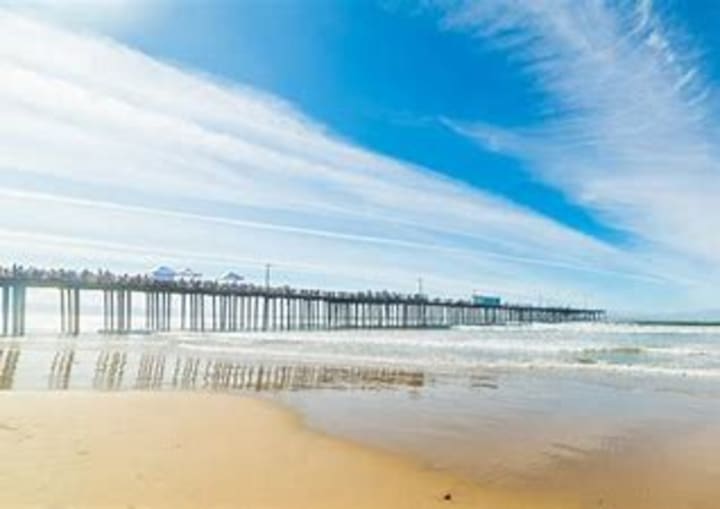
Vince and I often took a ride to Morro Bay, either on his bike or in our Greenbrier van. Morro Bay has a gorgeous harbor, at the end of which is the the gigantic Morro Rock.
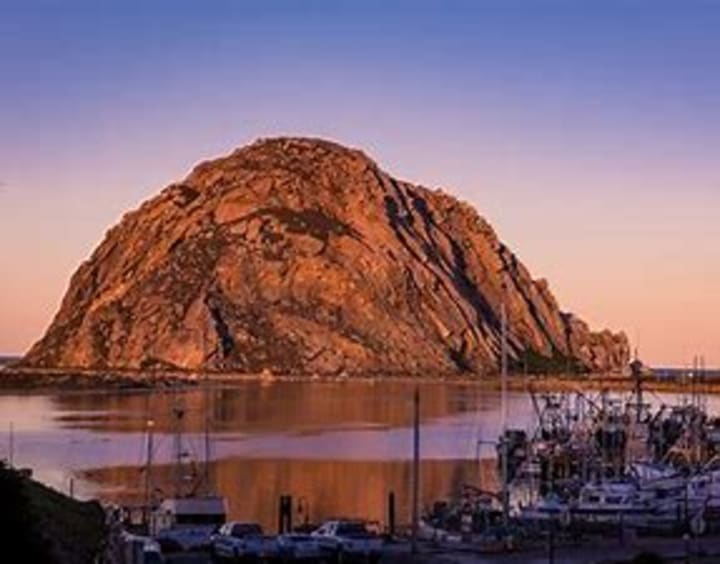
Along the port are seafood restaurants and holes-in-the-wall. We always ordered baskets of mixed deep-fried cod, shrimp, clams, oysters, and fries. Man, were they good after a long trip!
Morro Bay actually is not that far from Cambria, but it felt that way to me. Traveling there was well worth it, between the view and the food!
Another area we sometimes went to was on the south side of the town in a state park. We rode out on a sandy track to a large area of wet sand to watch people digging clams. I wonder why we never thought of doing that!
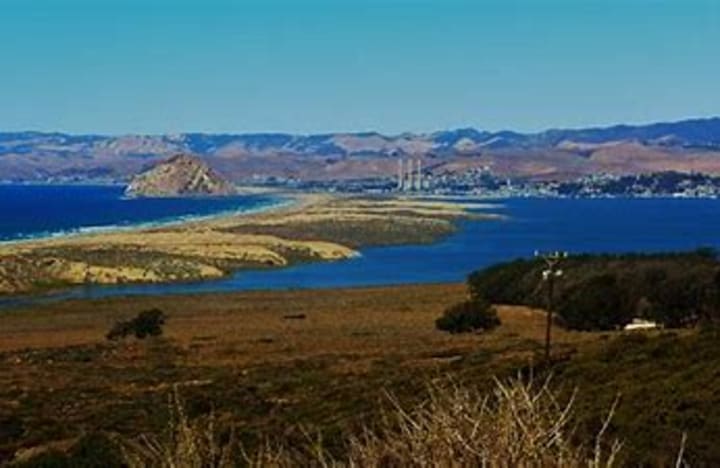
A few months after Mom and I moved to the log cabin, we found another, larger house on Park Hill. Park Hill rises directly above the coast. Our house had a sign in the front that said Storybook House!
And, indeed, it looked like one. Its brown shingles were topped by a steep roof with a chimney rising above it. Along the side of the house was a room with paned windows for walls.
Inside, the front door opened into a living room with a stone fireplace on one side, and the dining room on the right. Behind the dining room lay the kitchen, the bathroom, and a small storage room.
Dad kept his books in the small room, and had a desk in there. Dad seemed to always bring work home with him. He loved his engineering, so felt fine about it.
Dad introduced me to novels at a young age. From the time I learned to read, I took to it. In Cambria, he began to give me more adult books by wonderful authors like Graham Greene's Travels with My Aunt, Somerset Maugham's Of Human Bondage, and John Steinbeck's East of Eden.
As a girl I read all the Little House on the Prairie books, A Wrinkle in Time, and many others while lying on my stomach on my bed eating popcorn from big bags Dad brought home for me.
There were two ways to reach my bedroom. The one I liked best was to climb the ladder in the dining room that led to a loft. The other way was to mount a steep and narrow staircase.
At the top of the stairs, my parents' bedroom was to the left. To reach my room, I passed through a small bedroom into the loft, with its pitched ceiling paneled in pine.
My closet was essentially over the kitchen. There was very little room or practicality to it because the small space angled this way and that.
My double bed was the same one Mom and I bought used in Menlo Park. Come to think of it, I wonder how we even got it up there!
As usual, I listened to my albums while sitting on the floor leaning against my bed or lying on it. Judy Collins's, Joan Baez's, and Joni Mitchell's music seemed to belong there in that cozy, dark room.
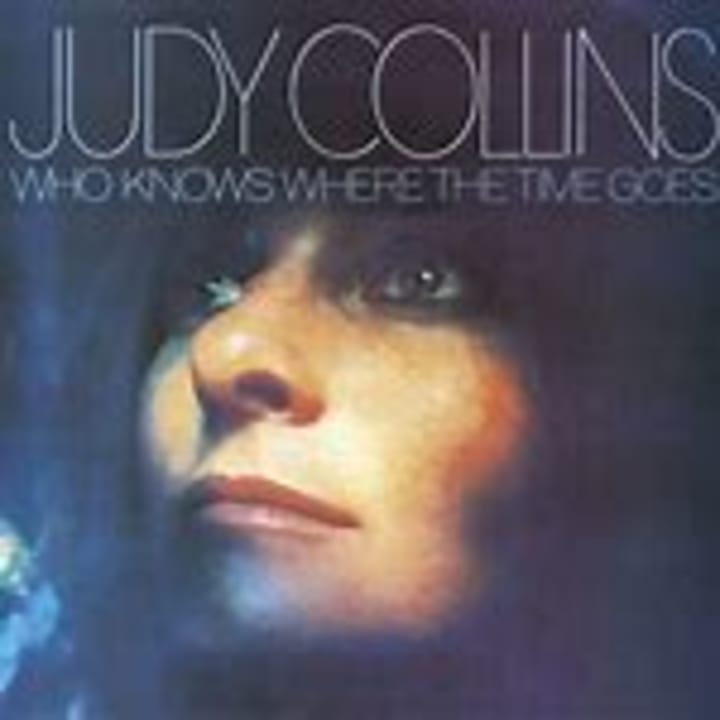
"Who Knows Where the Time Goes" by Judy Collins comes to mind. I still carried my depression, sense of loss, and longings from my life moving around, losing friends, and wishing for a stable home. The lyrics go like this:
Across the evening sky
All the birds are leaving
But how can they know
It's time for them to go?
Before the winter fire
I will still be dreaming
I have no thought of time
For who knows where the time goes?
Who knows where the time goes?
Sad, deserted shore
Your fickle friends are leaving
Ah, but then you know
It's time for them to go
But I will still be here
I have no thought of leaving
I do not count the time
For who knows where the time goes?
Who knows where the time goes?
And I am not alone
While my love is near me
I know it will be so
Until it's time to go
So come the storms of winter
And then the birds in spring again
I have no fear of time
For who knows how my love grows?
And who knows where the time goes?
Somehow those lyrics, as well as the slow, rather mournful tune, resonated with my mood.
_______________
Vince and I often took Chippie to a tiny cove near the Storybook House. A neighborhood of fancy vacation homes nearby on the edge of the Fiscalini Ranch offered a rickety gray stairway to the beach.
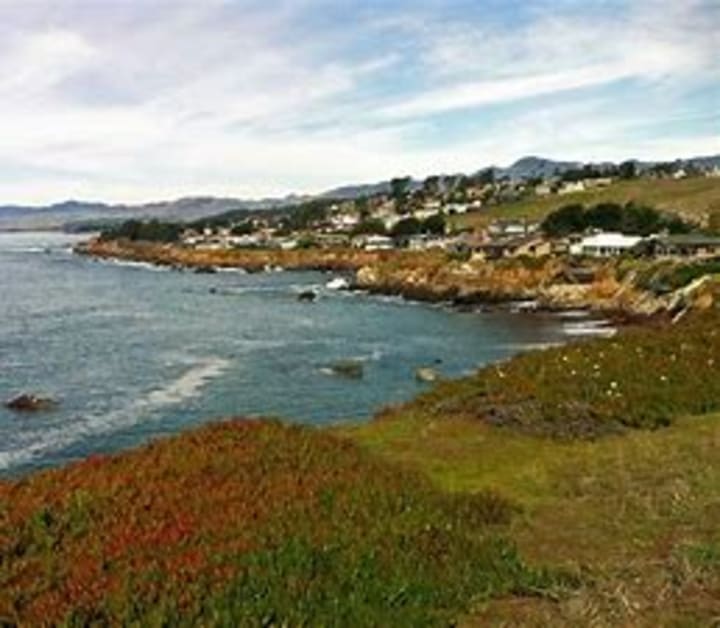
The beach was covered in tiny stones and shells. Next to the beach were rocky outcroppings and tide pools. Vince, Chippie, and I climbed up to explore the formation. We helped Chippie when he encountered crevasses he couldn't jump. Tiny tide pools often held anemones, tiny crabs, and bits of seaweed.
Vince and I rested up there and listened to the tap, tap, tap of sea otters cracking clams open on rocks laid on their tummies. Otters are adorable animals, with their whiskers, soulful brown eyes, and frolicking.
There was a point where we had to go around the outcropping to get to the other side. We had to make sure we headed back before our way was blocked by the incoming tide. We needed to count the number of waves before we could proceed when the water was lowest.
___________________
My favorite class at Coast was home economics. The teacher was a petite, dark-haired young woman, who recently received her teaching credential.
She taught us many things, including cooking, sewing, and keeping a budget. Unfortunately, I paid little attention when she talked about savings plans, life insurance, and stocks and bonds. Paying heed to her advice would have served me well.
Mom taught me the basics of sewing when I was eleven. Over the years I made most of my clothes. This teacher showed me how to perfect my skills, which enabled me to make professional-looking clothes from then on.
She may have also taught us to crochet, because I don't remember anyone else teaching me. The next year I started on a colorful afghan in purple, fuchsia, cobalt blue, and green. I crocheted circle after circle that would be sewn together. Sadly, I never finished it.
The recipes she gave us were basic -- mashed potatoes, tuna casserole -- and one unusual one called Mock Apple Pie. The "apples" were made of Ritz Crackers that were placed on the crust. An apple-flavored concoction was poured over the crackers. By the time it came out of the oven, the crackers had swollen. The pie did taste like real apple pie. Although not as nutritious.
I decided I wanted to learn how to cook. In an attempt to cook stew for dinner, I poured in some spices. To my horror, I noticed tiny, hard balls in my broth. They were weevils!
I pretty much stuck with Mock Apple Pie for a while after that.
That class is somehow associated in my mind with my writing a column for the school paper. My topic was crafts. The project I mainly remember is that of collecting and arranging dried grasses and flowers. I gave instructions on how to dry the flowers by hanging them upside down.
Mom and I had a fondness for natural objects. In the glass-paned room in the Storybook House, we poked holes in nuts, seeds, and acorns, stuck them on skewers, varnished them, and strung them into necklaces, separating them with knots or beads. They were quite lovely.
I always loved arts and crafts. I became interested in weaving. Mom and I traveled to Morro Bay, where a woman was selling an inkle loom. Inkle looms are small and sit on a table.
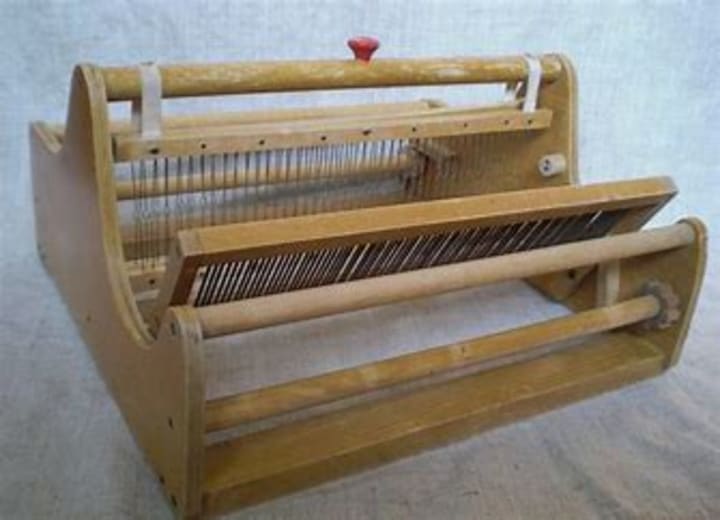
Unfortunately, Mom and Dad were not willing to pay for lessons in how to use it. I never did figure it out, even though I held onto it for many years. Too bad there was no such thing as the Internet even conceived of back then! I could have looked up how to do it.
The thing that stumped me was how to string the warp threads vertically, which forms the foundation for weaving. The weaving part is easy, I think. For that you weave a horizontal thread or yarn through the warp threads as they alternate. To push the weft through, you use a shuttle.
______________________
Chorus was my next best favorite class. It was taught as we stood on metal bleachers in the cafeteria. Mr. Pringle was a short, spritely man with a pleasing personality.
In those days, I could sing. That was before my hearing loss made it difficult for me to keep a tune. Poor Rena, though, as she stood next to me, instead of singing, she croaked. Before our performance, Mr. Pringle actually told her not to sing, but to lip sync, instead! Rena's voice was the only unattractive thing about her.
_____________________
In the spring, my good friend Dona came down. We met in eighth grade, and have been friends ever since. Dona was a thin, enthusiastic, sweet girl. It was so nice for me to have someone who knew my history and engaged in intimate conversations.
She had made some headway in being accepted by the in-group, her ambition when I went to school with her in San Francisco. She told me about taking French. She talked about a guy she liked. We talked about various boys, including Vince and my issues with him. We talked about our hopes and dreams and worries.
I wasn't long after Dona left that my friend Miles came down. I met Miles in sixth grade in Palo Alto. In tenth grade, after I had lived many places, I heard someone call my name as I walked down the hall. It was Miles!
Miles was a highly intelligent boy, and a good friend. By then, I believe he had given up his hope of being my boyfriend. We did the Cambria things -- went to the cove, to Morro Bay, walked along the beach.
___________________
In Menlo Park I did a short stint volunteering at Stanford's Children's Health Center. I don't remember what prompted me to do that.
One day I was assigned to watch a four-year-old boy who could not feel pain. He was a cute, rather funny-looking child. I followed him around the playground and sat next to him in class.
All of a sudden I became aware that he was climbing ever higher on a tall jungle gym. Terrified that he would fall, I yelled for help, and ran over. A staff member coaxed him down. Scared me to death. I never went back.
My interest in helping people did not end there, however. It lasts to this day. I became a psychotherapist as an adult.
I volunteered for an organization in San Luis Obispo called the Special Olympics. The Special Olympics is well-established now, but was just being formed then. But that experience turned out to be short-lived, too.
At a meeting in San Luis Obispo, a teenage girl ran up to me and pinched my breast! I pretty much lost interest after that.
Before that, though, I was asked to give an interview for the news. I dressed in my favorite rust-colored jumper, brushed my long, straight hair, and drove into San Luis Obispo.
I sat in a chair while a reporter asked me about the Special Olympics and how I liked volunteering there. As I recall, I spoke articulately, then rushed home to watch myself on the news.
When I saw myself on TV, I excitedly shouted and ran to get Mom, who was making supper in the kitchen. Well, that set Chippie into a frenzy of barking. I never did see my interview!
____________________
Dad often took the train down from San Francisco to stay the weekend or longer. He and I were train buffs, and loved to ride them. I picked him up at San Luis Obispo's station, and we drove home to Cambria.
On the drive, we did not talk much. Dad and I enjoyed spending quiet time together. He did ask me about school, but I had little to say.
At home, Dad checked the Greenbrier's oil and water, and did maintenance on the car. He enjoyed taking care of our cars. Often, we washed the van together. I enjoyed slopping on the suds and hosing it down. Dad cleaned the inside. (Somehow, whisk brooms worked in those days!)
Dad and Mom always used to say that the car ran better after it had a bath!
___________________
Sylvia brought my young nieces for a visit once. She and I took a tour of Hearst Castle. We got on the bus for the steep and windy ride up the hill. On the steepest slope, the driver said, "Lean forward. It will help the bus make it up the hill!" Some people actually did lean forward!
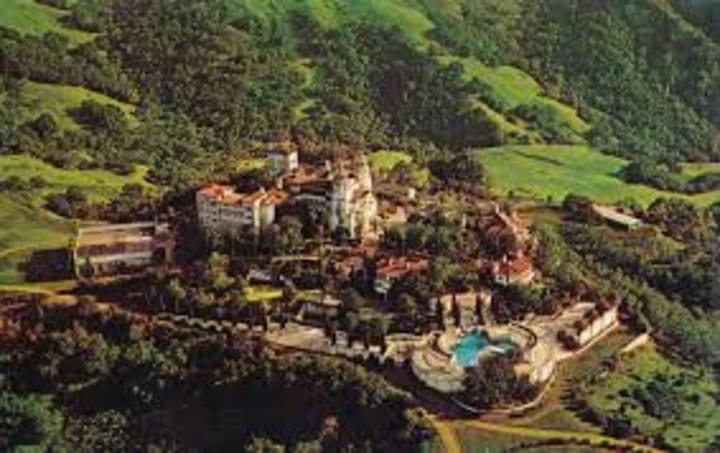
Hearst Castle is an amazing place. Built by William Randolph Hearst, a newspaper magnate from San Francisco, it is an over-the-top lavish place. Just the mansion consists of 115 rooms, with 38 bedrooms, over 40 bathrooms, a theatre, and a beauty salon.
In 1896, William's father bought 40,000 acres of rolling countryside inland from San Simeon. Over time he bought more acreage, and after William inherited the land, he expanded it to roughly 250,000 acres. He hired Julia Morgan, a well-regarded architect and engineer from San Francisco to design his estate.
Julia Morgan was the first to use reinforced concrete in her structures. It proved to be a valuable material in the San Francisco Bay Area, as it is able to withstand earthquakes very well. She used a combination of Arts and Crafts and classical architecture. In addition to houses, she designed many edifices and buildings for universities, such as UC Berkeley.
As our bus approached the estate, we passed the zoo, where Hearst brought species from around the world.
There were two places animals were kept in the zoo: the enclosures, which Hearst called the Menagerie, and the range. At one time, the enclosures held leopards, lions, bears, including grizzlies, orangutans and other primates, exotic birds, and other animals. There was even an elephant. Hearst called the animals Zooexotic.

Other animals were free to roam. An assortment of deer, antelope, camels, kangaroos, ostriches, llamas, sheep, musk oxen, yaks, giraffes, and zebras among them. There are still zebras grazing near Hearst Castle.
Hearst socialized with the elite from all over. He especially had a fondness for movie stars. There were many tales of the wild goings-on at the Castle.
At the top of a hill lies the castle called "casa grande," and its surrounding smaller structures. These include what are euphemistically called "cottages," for guests, swimming pools, tennis courts, and plazas.
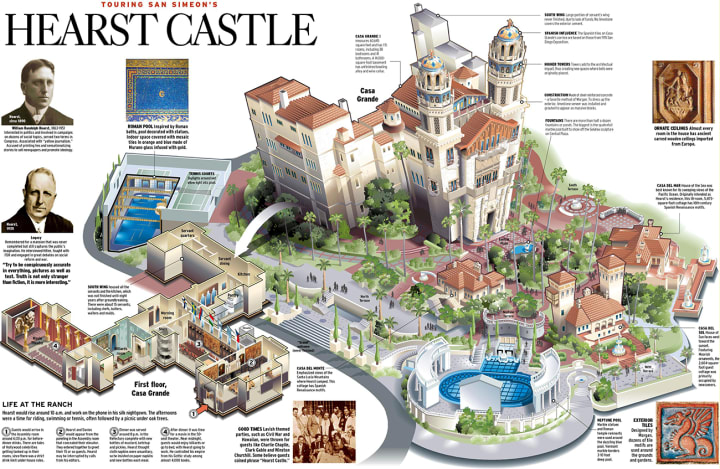
My parents and I had toured the castle before, so I was familiar with the main rooms, the pools, and the property in general. The day Sylvia and I took a tour, we were the only people on it! The guide offered to show us areas not included on the tour, and we proceeded upstairs to a wing with bedrooms.
The over-the-top luxury boggled our minds. Adjoining each bedroom were rooms where the staff maintained the clothing. Each of these cedar-paneled rooms was fitted with huge closets, held ironing boards, cupboards galore, and any additional paraphernalia the staff might need.
It was all fascinating, but Sylvia and I began to feel a little creeped out by the fact that this guide seemed so interested in leading us from one off-limits area to another. We looked at each other, then told him we wanted him to lead us back to the main rooms. Fortunately, he did.
As interesting as Hearst Castle was to visit, I couldn't help but think of all the people in this world who have so little. I marveled at the man's selfishness, and at his and his guests' monumental self-indulgence.
Rich and famous people from all over the world stayed at Hearst Castle. Winston Churchill stayed there, as did Calvin Coolidge, George Bernard Shaw, Howard Hughes, and Charles Lindbergh.
By the time "La Cuesta Encantada" or the "Enchanted Hill" was built, Hearst and his wife lived apart, and he moved his mistress, the actress Marion Davies in.
In its heyday in the 1920s and 30s, many Hollywood icons visited, including Clark Gable, Charlie Chaplin, Cary Grant, Mary Pickford, Jean Harlow, Greta Garbo, Buster Keaton, Errol Flynn, Lionel and John Barrymore, Douglas Fairbanks Jr, and the Marx Brothers.
To provide you with a little more of the flavor of life at Hearst Castle, I will tell you some of the features of La Casa Grande.
Before meals, guests gathered in the Assembly Room with its comfortable armchairs, massive carved fireplace, and priceless art. The room is 2,498 square feet. So that people didn't have to get up and walk a long distance to talk to someone, phones were provided on the side tables!
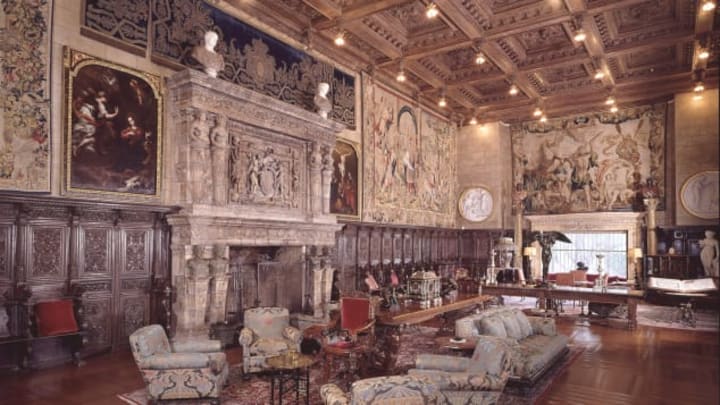
In the adjacent Refectory, guests dined at long tables set with fine crystal, tall candlesticks, and ketchup and mustard bottles! Hearst said he wanted to keep the atmosphere informal. Ha!
While the room was named after a monastery's dining hall, it looks more like a royal chamber, with the heraldic flags overhead. Do you think Hearst fancied himself royalty? I do.
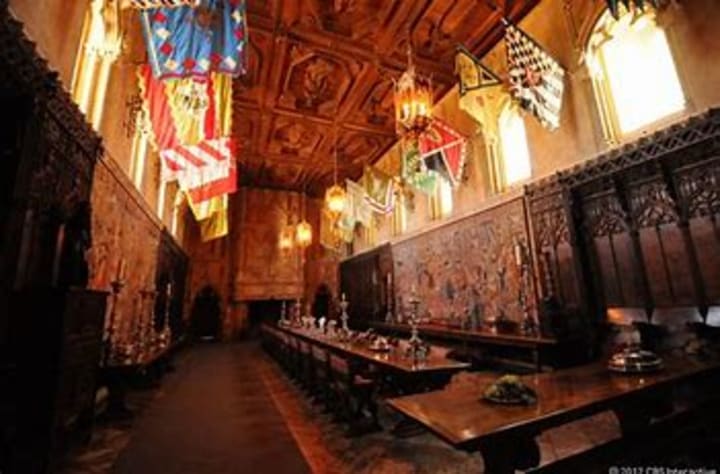
After dinner, guests might watch a movie in the castle's theater, or play billiards under massive chandeliers and next to medieval tapestries.
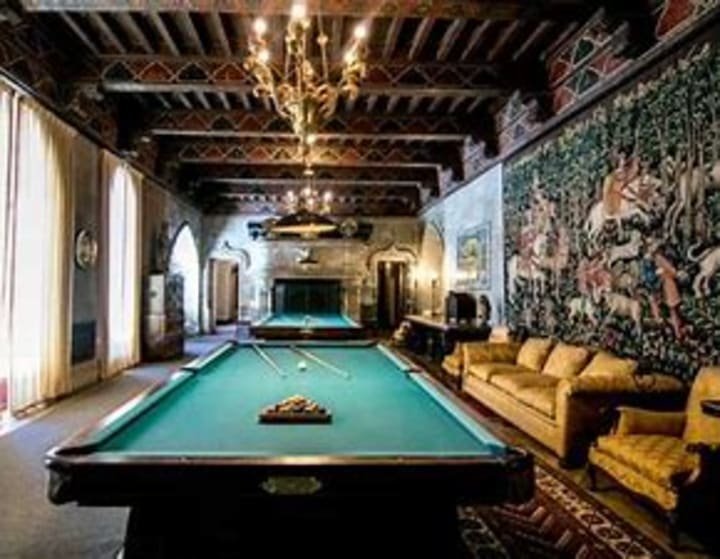
My favorite spots at Hearst Castle had to be the Neptune and Roman Pools, with their clear, deep-aqua water. I must admit, the Roman Pool made me feel a little creepy and claustrophobic because of the silence, but mainly, I think, because of the way the water blended into the room. It felt disorienting.
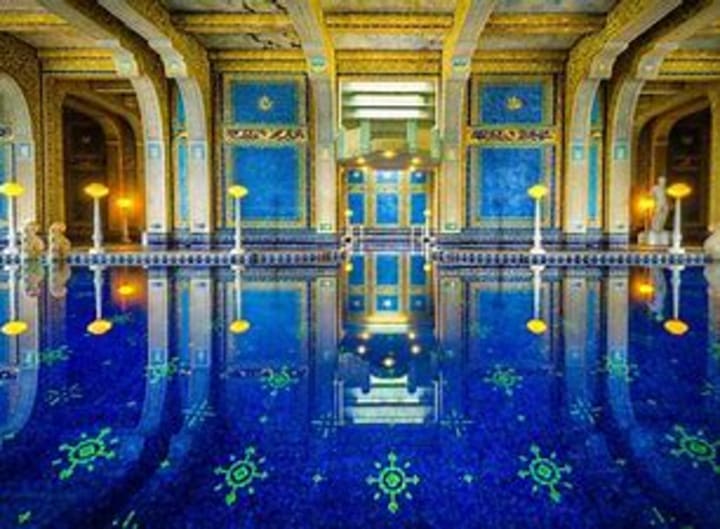
____________________
After a few months, Vince decided he missed me too much in Menlo Park, so he asked if he could stay with us. He found a job at the gas station near the highway, stayed with us for a while, then found a dingy little room in a house a few blocks away.
While still at our house, I began to sense that someone stared at me when I took a bath. My investigation revealed a small hole in the wall leading to the little storeroom. I ascertained that Vince was peeping at me through the hole. Naturally, when I confronted him, he denied it.
I became concerned about him, too, because he seemed to be getting increasingly depressed. One day we rode up to San Simeon and walked to the end of a rocky beach. Vince began to pick up crabs and smash them on the rocks while groaning loudly. He was unable to tell me what was going on. I became increasingly alarmed and frightened.
He either got whatever it was out of his system, or I managed to calm him down -- probably a combination of both. I refused to go places with him after that for a while.
Vince's mother died the year before, so I imagine unresolved grief played a role in his uncharacteristic behavior. We never talked about it.
____________________
One early morning we drove to San Simeon again, where we boarded a boat for a deep sea fishing excursion. I never did that again! The boat took us so far out we could not see land. I didn't mind the trip, except for the seasickness once we stopped to fish,. At that point, I felt panicky.
Here we were bobbing in the choppy water in the middle of a vast expanse of ocean and overcast sky over deep, deep water. I felt completely vulnerable. It was foggy enough that I wondered what would happen if we got lost out there.
Plus, when the bass were reeled in, their tongues stuck way out from the pressure. That sight did not help my sea sickness!
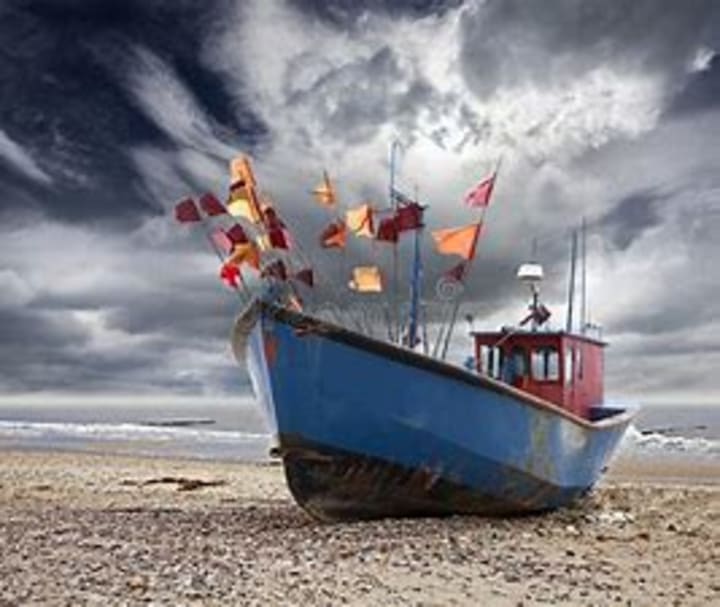
___________________
Vince was my date for the prom, a small affair held in the multi-purpose room for both seniors and juniors. I wore a long dress that Sylvia made when I was thirteen and was Robert's date at his prom in St. Helena. It was made from peach-colored silk Dad brought back from Saigon when he worked on an engineering job there.
Vince wore the only suit I had seen him in, and I have no idea where he got it. He scrubbed the grease from his job at the gas station out from under his fingernails, shaved, and got a haircut.
I wore my long hair in a French twist. The two of us looked pretty elegant!
Vince would only slow dance, which disappointed me because I loved to dance. Popular slow dances of 1970 included, "Make It With You" by the High Five, "The Long and Winding Road" by the Beatles, and "Raindrops Keep Falling on My Head" by B.J. Thomas. That is the theme song to Butch Cassidy and the Sundance Kid, a movie we saw that year.
I imagine everyone has seen Butch Cassidy. Maybe I'm wrong, given how old I am! It tells the story of a pair of outlaws in the wild west and their mutual love. The leading roles are played by Robert Redford, Paul Newman, and Katharine Ross.

The story is based on on the two leaders of the Hole-in-the-Wall Gang, Robert LeRoy Parker and Harry Longabaugh. The gang robbed banks and trains. Butch is the idea man; Sundance is the action man.
Butch and Sundance are pursued by posses throughout the movie. An especially memorable scene is when they jump off a cliff while having no alternative.
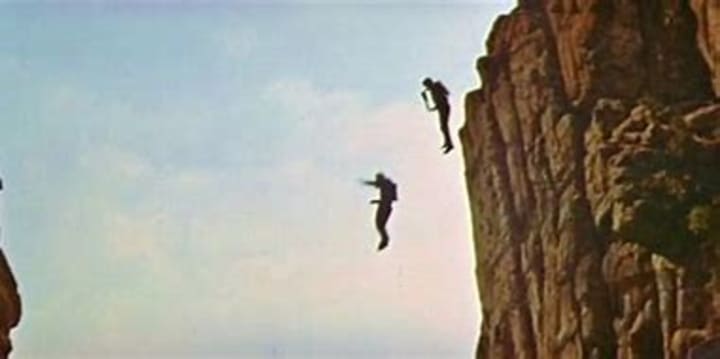
The movie is peppered with amusing repartee and incidents, but ends tragically when the pair is killed in Bolivia.
The other movie we saw was The Graduate. Again, I imagine most everyone has seen it. It stars Dustin Hoffman, who plays a young man named Benjamin Braddock. After finishing college, he returns home to California. He is not sure what kind of career he wants to pursue.
He is seduced by an older woman named Mrs. Robinson, played by Anne Bancroft. She is the wife of Benjamins' father's business partner. Benjamin and Mrs. Robinson have an affair, despite his becoming involved with the Robinson daughter, played by Katharine Ross.
Mr. Robinson finds out, and threatens Benjamin with violence. He forces Elaine to drop out of UC Berkeley, and wants her to marry an unappealing guy named Carl. They are at the wedding when Benjamin finds out, rushes to the church, and whisks Elaine away.
Dustin Hoffman is superbly funny throughout the movie. I recommend it.
____________________
After my graduation in a red cap and gown, having flung our tassels, we took off on a chartered bus for Disneyland. I agreed to be Howard's date.
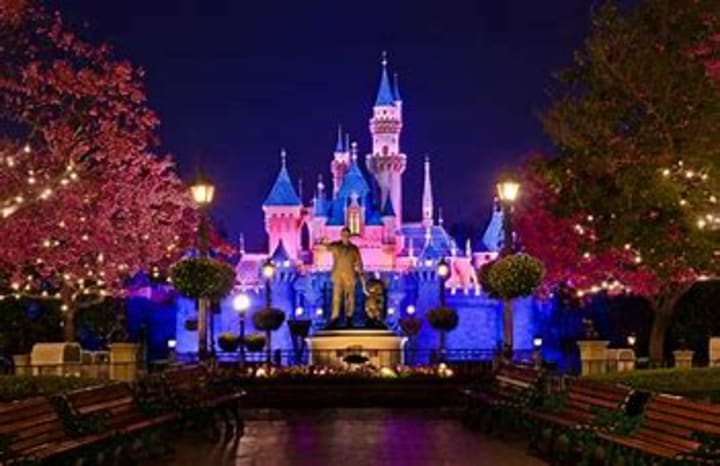
It was dark by the time we reached Disneyland. Sleeping Beauty Castle shone colorfully in the distance as we ran from attraction to attraction. I even let Howard grab my hand and pull me along once in a while!
In those less egalitarian times, girls needed to be careful about confusing boys who liked them. Today, kids of the opposite sex often express physical fondness for one another, even if they do not want to become romantically involved. We did not have that liberty. If a girl held hands with or hugged a boy, the interpretation was that she was interested. We had to be careful not to "lead them on."
If you haven't been to Disneyland, it's great fun. My family went there a couple of times when I was little. As a kid, I loved to drive the little cars around the racetrack. It's a Small World was fun, but because they play the theme over and over a wide area, I got sick of it. I was a great fan of Peter Pan, and liked the ride Peter Pan's Flight.
When my son was little I took him to Disneyland and bought him a bunch of Disney characters in one of the shops.
A detail you may not know is that Disney films were not shown for many years. This was true when I was little.
____________________
The summer after high school, I worked as a motel maid in a Best Western in San Simeon. Man, was that hard work! I wore olive green slacks and a provided shirt (ugly).
I found some disgusting things under beds. Some people just have no consideration. They were the same people who left no tips.
Howard worked at the same hotel doing maintenance. He did not bother me. I guess my behavior at Disneyland put a quash on his hopes.
I was assigned to work with an experienced maid. She was a tiny Filipino woman with a brisk character. She worked so fast it was hard to keep up with her.
She did an odd and unsanitary thing: in order to save time, she didn't wash the glasses unless they had lipstick marks (motels had glass ones in those days), merely slapped on a paper cover that said, "Sanitized for Your Safety!"
For "lunch" I spent some of my hard-earned money on cherry pie at the coffee shop. We had little time, and I always forgot to take a lunch. Given my very limited funds, I didn't want to spend my money that way.
____________________
At the end of summer came the Santa Ana Winds. Also called devil winds, they bring hot air from inland, in contrast to the cold winds that come off the ocean. They felt so good after a year of often bitterly cold wind in Cambria.
I made friends with the son of a family friend I mentioned in a previous post. She was the librarian in the tiny library downtown. Roy was a young man, maybe in his late twenties. He was visiting his mom from the warehouse he lived in inland in Ojai.
He and I drove to a white sand beach south of Cambria. We sat on the sand, enjoying the wind and the expanse of midnight blue sky above.
____________________
When Vince and I rode along the highway, we often passed an old abandoned farmhouse nestled in a little valley by a creek. It became melded into my fantasies, so each time we passed it, I saw myself in my future life as a contented woman with a strong, loving husband and children to care for.
In Menlo Park I developed the fantasy that one day I would live in an old house in the country and live a domestic life. I suppose it was a reflection of my love for log cabins. It was also a common image during the 60s hippie era -- the long, calico dress, long hair, and bare feet.
I once tried to bake bread. I trudged along Bay Road to a tiny grocer's and bought flour and yeast. Back at home I followed a recipe, kneaded the dough, and placed it in a covered bowl in the dish cupboard.
Then forgot about it.
By the time I remembered, because I smelled the dough, I ran into the kitchen, where I found it dripping down onto the counter!
So, between the bread, a steak I cooked with a lid on the pan (pasty and overcooked), and the weevils in my stew, my track record was dismal. Third time was not the charm in that case!
____________________
My parents decided to move us back to San Francisco. It was okay with me. I had had enough of small town life. I would miss Rena and the beautiful countryside, but I felt there were few opportunities for me there.
Vince and Roy once again helped us move. This time my parents found a studio apartment on Nob Hill. It was quite a job to park a moving truck on the hill, then trudge our things to our fourth floor apartment. Vince and Roy were troopers, and loyal friends.
In my next post, I will describe the happenings during the next two years. I decided to take what is now called a gap year. My high school experience hadn't been very pleasant, and I needed a break.
About the Creator
Caroni Lombard
As a child my family moved often. In my story, I share that experience; what it was like and how we coped.
But my story is not just for those who share my experience of growing up in a highly mobile family. It's for anyone who's human.
Enjoyed the story? Support the Creator.
Subscribe for free to receive all their stories in your feed. You could also pledge your support or give them a one-off tip, letting them know you appreciate their work.

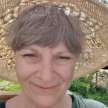
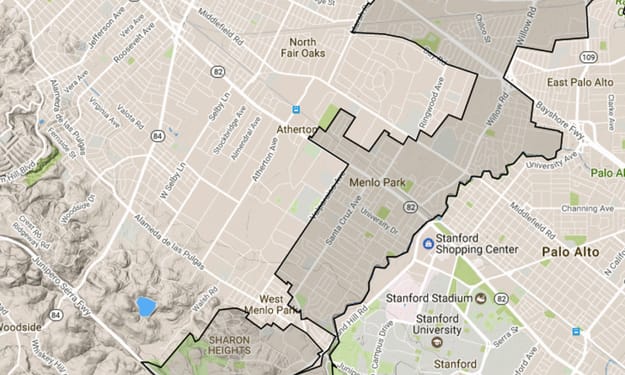



Comments
There are no comments for this story
Be the first to respond and start the conversation.